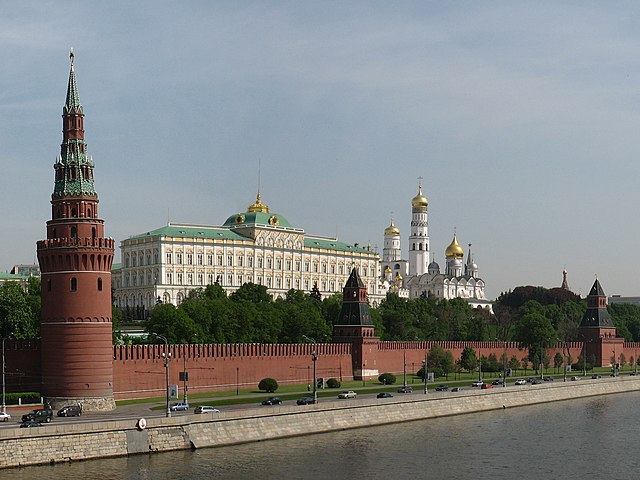The Kremlin Wall Necropolis is the former national cemetery of the Soviet Union, located in Red Square in Moscow beside the Kremlin Wall. Burials there began in November 1917, when 240 pro-Bolsheviks who died during the Moscow Bolshevik Uprising were buried in mass graves. The improvised burial site gradually transformed into the centerpiece of military and civilian honor during the Second World War. It is centered on Lenin's Mausoleum, initially built in wood in 1924 and rebuilt in granite in 1929–30. After the last mass burial in Red Square in 1921, funerals there were usually conducted as state ceremonies and reserved as the final honor for highly venerated politicians, military leaders, cosmonauts, and scientists. In 1925–1927, burials in the ground were stopped; funerals were now conducted as burials of cremated ash in the Kremlin wall itself. Burials in the ground resumed with Mikhail Kalinin's funeral in 1946.

Tombs of Suslov, Stalin, Kalinin, Dzerzhinsky, Brezhnev in front of the Moscow Kremlin Wall. The tomb of Yuri Andropov, which stands between Kalinin's and Dzerzhinsky's, is obstructed by trees. The mausoleum is immediately to the right.
As recently as 1800, the site of the Necropolis was a boggy moat spanned with stone bridges.
Red Square Mass Graves
10 November 1917. Mass grave on Red Square
The Moscow Kremlin Wall is a defensive wall that surrounds the Moscow Kremlin, recognisable by the characteristic notches and its Kremlin towers. The original walls were likely a simple wooden fence with guard towers built in 1156. The Kremlin walls, like many cathedrals in the Kremlin, were built by Italian architects.
A view of the Moscow Kremlin
The famous Spasskaya Tower, with its ruby star added in 1937.
The wall by the Moskva river







